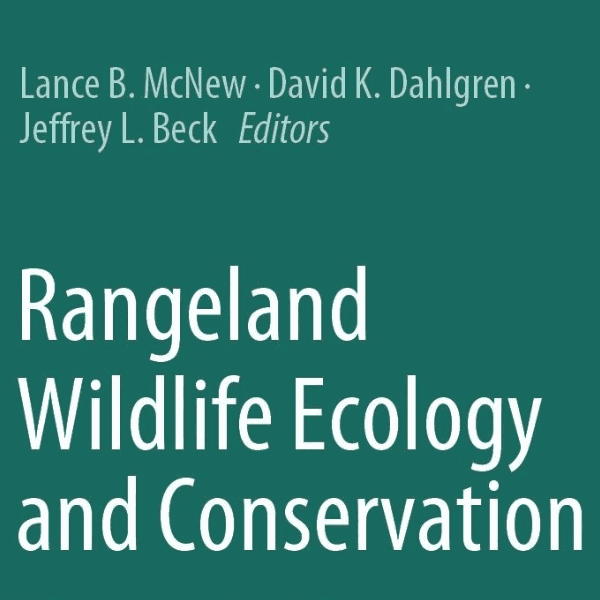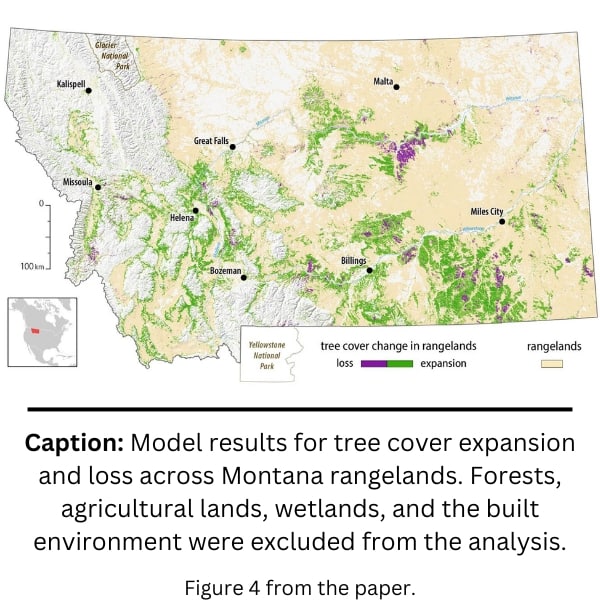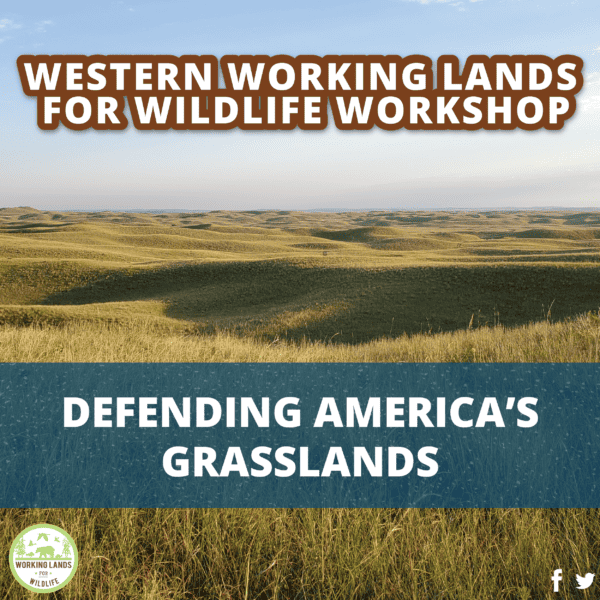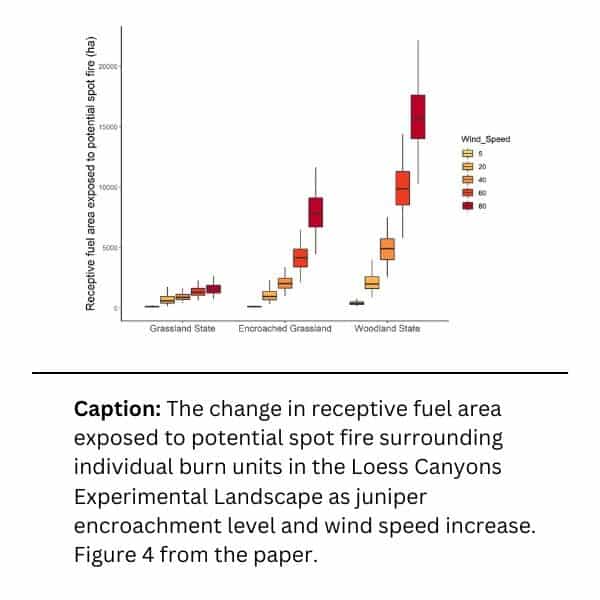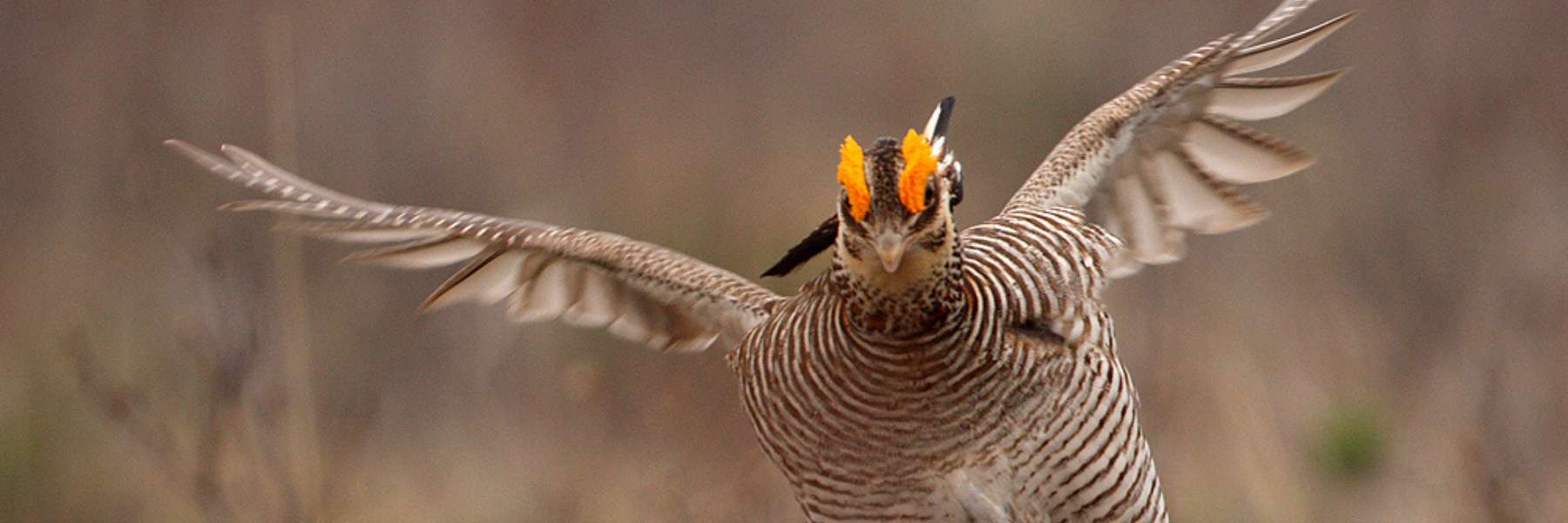
Photo: Nick Richter
Lesser Prairie-Chicken
These upland birds are an icon of the Southern Great Plains. We're working to make sure they thrive through win-win, voluntary conservation.
On the shortgrass prairies in the Southern Great Plains, lesser prairie-chickens wander amidst bluestem, sand sagebrush, and shinnery oak. Known for their springtime “booming” calls while mating, these crow-sized grouse are a bellwether for how grassland ecosystems are faring.
One million lesser prairie-chickens once ranged across Colorado, Kansas, Oklahoma, Texas, and New Mexico. But their numbers have plummeted due to habitat loss. These birds now inhabit only 15% of their historic range.
Keeping America's prairies healthy and intact benefits for more than just prairie chickens — it's a boon for all grassland wildlife, along with the ranchers and rural communities who rely on working rangelands.
The landscape that supports these species is in peril. Land use conversion and woody species encroachment have impacted much of the grasslands in the Great Plains. Fortunately, there are still large expanses of intact prairie in the Plains where producers and wildlife are both thriving.
More than 90% of the Great Plains is privately owned, making the NRCS's efforts through WLFW critical to saving, and expanding, the U.S.'s last remaining grasslands.
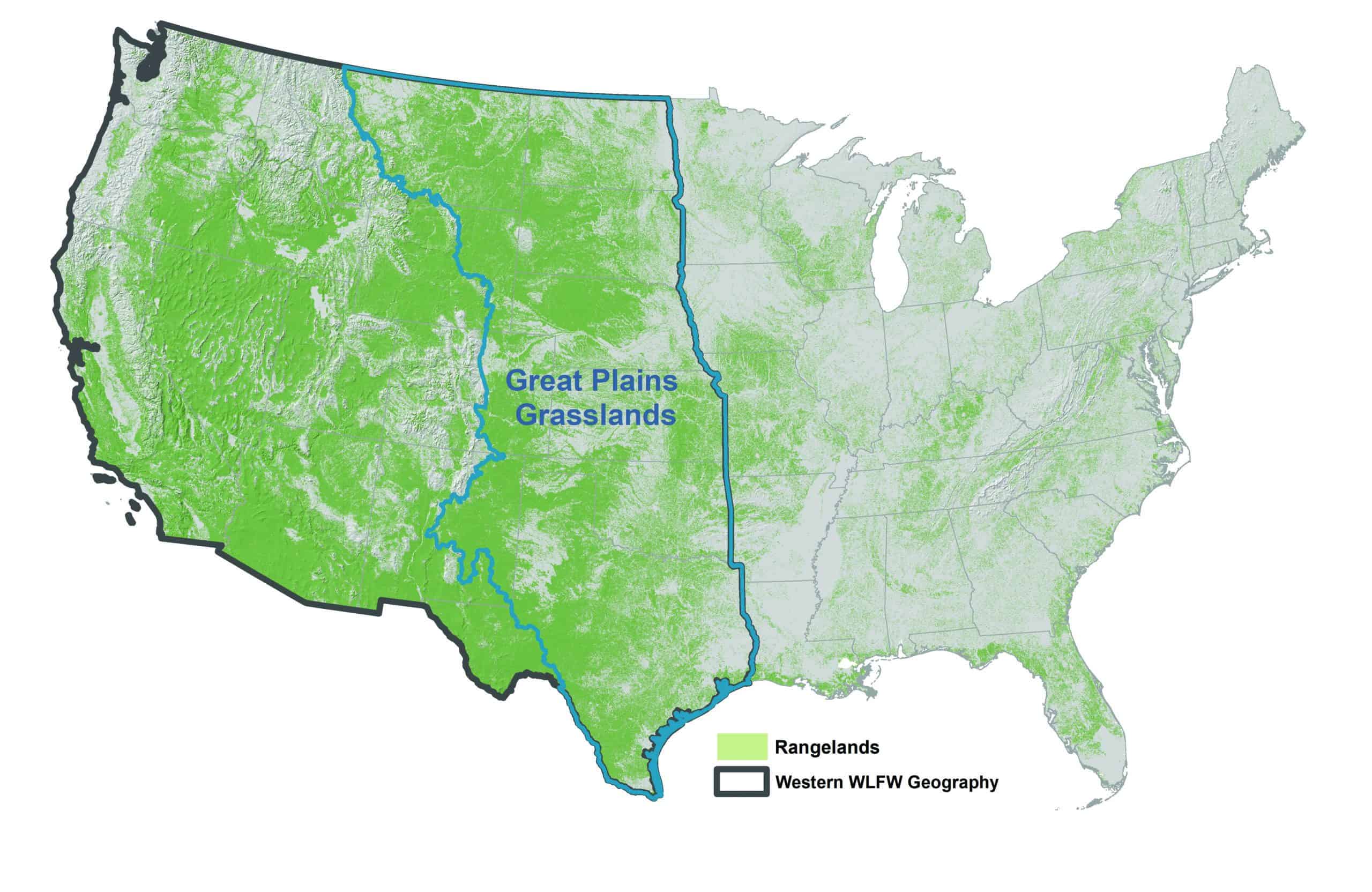
From the Dakotas to Texas, the Great Plains are one of the U.S.'s most important, and imperiled, biomes. Map: WLFW.
Lesser prairie-chickens and humans have lived together on the Great Plains for thousands of years. A ceremonial dance of some Native American Tribes—called the “chicken dance”—celebrates the interconnection between native people and the grassland grouse.
As described by the Giluts’aaw Tribe, dancers mimic the male prairie chicken’s mating display: fluffing feathers, strutting, using a pecking motion of the head, and tapping the ground, all the while moving forward and spinning.
Today lesser prairie-chickens inhabit the most remote and sparsely populated lands in the Southern Plains. Agricultural producers who live on and care for these grasslands are essential to the bird’s survival.
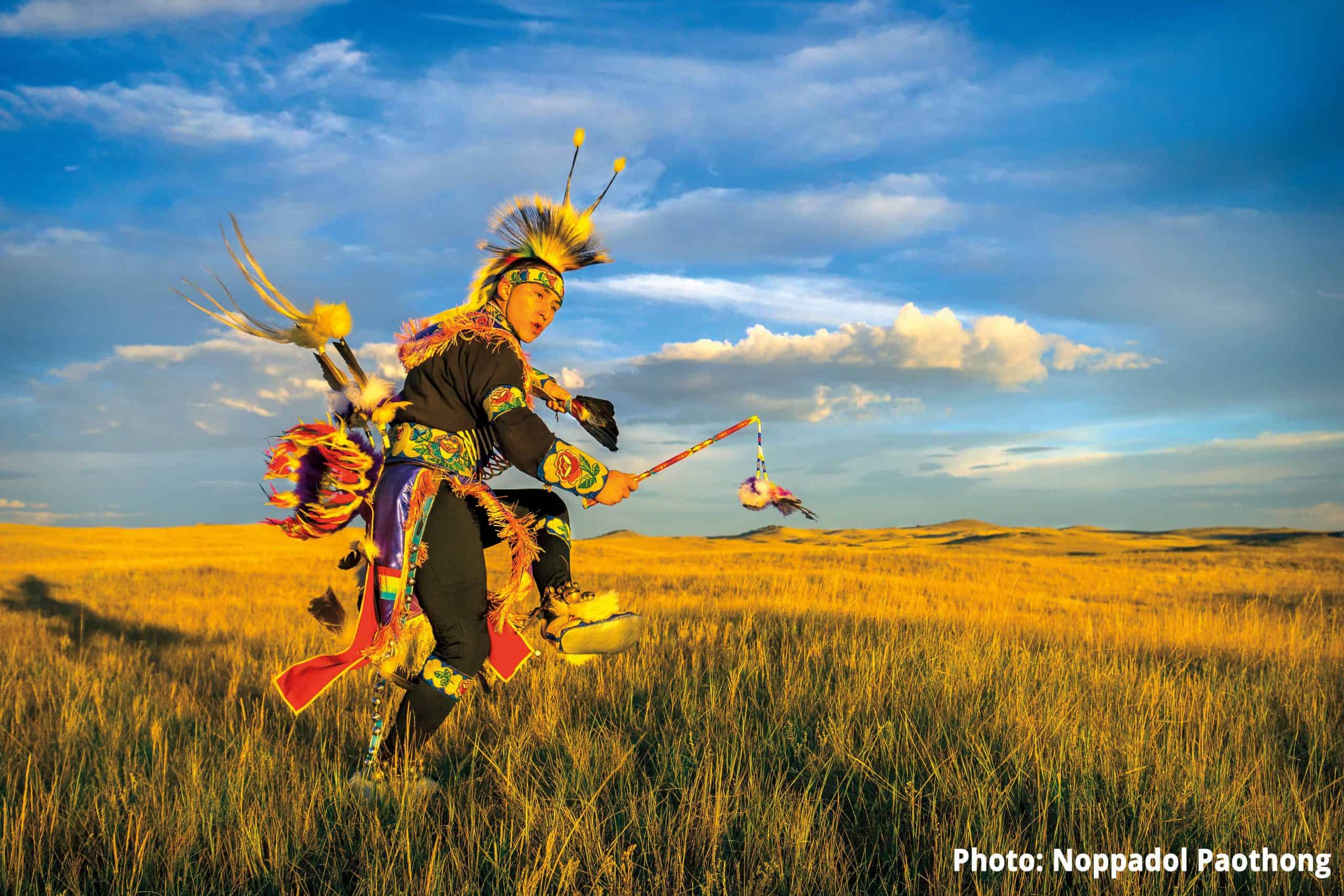
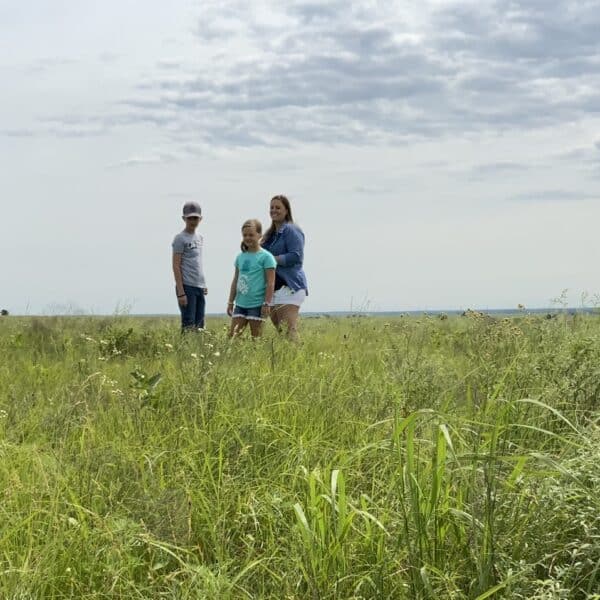
“The prairie is delicate and has to be nurtured. It’s been a lifelong work and it’s paid off.”Jennifer Browning, Kansas landowner
The best chance to spot a lesser prairie-chicken is in the spring when they gather on leks for their mating display. To avoid disturbing the birds, be settled behind a viewing blind before the birds arrive at dawn and stay hidden until the birds leave the lek mid-morning.
Check out the "Kansas Lek Treks Prairie-Chicken Festival" in mid-April, hosted by Audubon of Kansas. Some private ranches or guide services also offer lesser prairie-chicken viewing tours.



